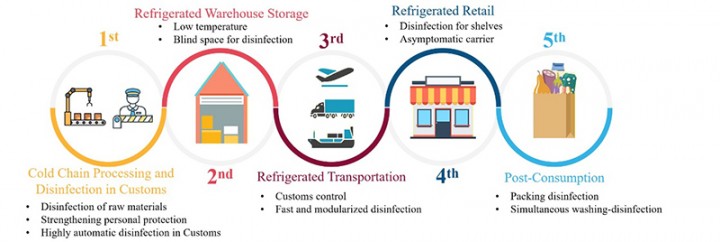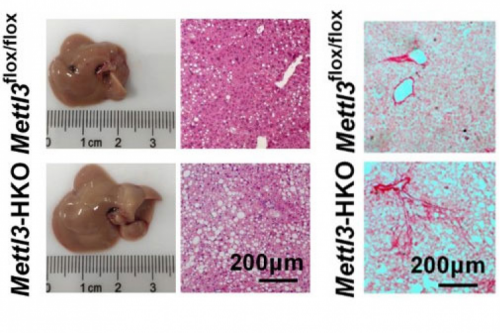HIT All Media (School of Environmental Science and Engineering/Text) Recently, the team led by academician Ma Jun from the School of Environmental Science and Engineering of HIT published an article titled “A multi-stage green barrier strategy for the control of global SARS-CoV-2 transmission via food cold chain” in Engineering, a journal of the Chinese Academy of Engineering (http://www.engineering.org.cn/ch/10.1016/j.eng.2021.08.013), which provides strategic support for effectively cutting off the “object to human” transmission route of the SARS-CoV-2.
The joint China-WHO study on the origin-tracing of the novel coronavirus lists the introduction of the virus into the population through cold chain food transport as a "likely" route of origin and transmission of the outbreak. As a low-temperature environment is conducive to the long-term virus survival, the object-to-human transmission route that through direct contact with contaminated cold chain goods or cross-border cargo transportation at low temperature may play a key role in the outbreak and spread of the COVID-19 pandemic.
To solve this problem, Ma Jun’s team proposed a disinfection system of multi-stage green barriers covering the whole life cycle of cold chain goods based on a large number of actual disinfection engineering cases and long-term research accumulation. By establishing targeted virus prevention and disinfection strategies for five key steps throughout the whole life cycle of cold chain goods (i.e. cold chain processing and disinfection in customs, refrigerated warehouse storage, refrigerated transportation and distribution, refrigerated retail, post-consumption), the system aims to efficiently kill the virus and cut off the cold chain transmission of the virus. Thus, the “object to human” transmission route of the virus through the cold chain logistics can be cut off effectively.
In terms of disinfection methods, the disinfection of cold chain goods and equipment is a special operation carried out at low temperatures. Common disinfectants such as sodium hypochlorite, peroxyacetic acid, and chlorine dioxide are easy to freeze once they have been sprayed, resulting in a significant decline of disinfection efficacy. In addition, the placement of cold chain goods in cold storage and containers can also lead to disinfection dead spots. To solve these problems, the team proposes the use of gaseous disinfectant represented by ozone, which has the advantages of high automation of disinfection equipment, no dead-end disinfection, and good low-temperature disinfection, thus completing the disinfection of cold-chain goods and equipment more efficiently and significantly reducing the labor cost of the disinfection process. The team’s ozone-based disinfection technology has demonstrated satisfactory performance in practical disinfection operations for cold chain logistics, in cities such as Dalian and Suifenhe. In particular, after nearly one year of on-site application at Suifenhe port, where the volume of cargo is large, the technology has achieved good disinfection results and played an important role in ensuring the smooth development of trade with Russia.
In the context of the epidemic entering a normalized stage of prevention and control, the disinfection of cold chain goods should also become normalized. The current cold chain disinfectants are mainly chlorine, iodine, quaternary ammonium salts, which produce chlorite, chlorate, iodoacetic acid, and nitrosamine, and other harmful disinfection by-products in the actual process and may cause secondary contamination and safety risks if used in excess in the normalized epidemic prevention and control. In addition, residual chlorinated disinfectants attached to the outer packaging of cold chain cargoes may produce air pollutants such as dioxins during incineration and disposal, causing environmental pollution. The team proposed that compared with the above-mentioned disinfectants, the green disinfection methods such as ozone and ultraviolet radiation have prominent advantages over other disinfectants from the perspectives of safety, health, and environmental friendliness. Thus, in the stage of normalized disinfection for cold chain goods, it is recommended to promote the application of green disinfection methods and in-depth research should continue to be conducted in further improving the disinfection efficiency of such technologies.
This research is funded by the National Key Research and Development (R&D) Program of China and the Interdisciplinary Foundation of Harbin Institute of Technology.





